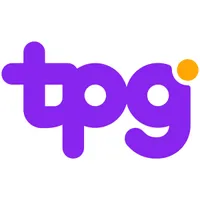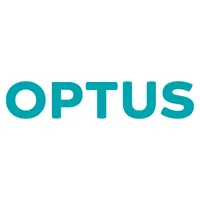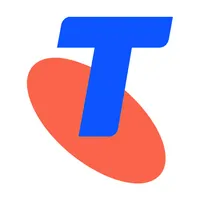Compare the best mobile phone plans and deals in Australia

Finding the best phone plan in Australia involves more than just hunting the cheapest monthly payment or best discount. It's about balancing what you need versus what you can afford.
The Australian market is packed with a vast array of phone plans, from the best Optus plans and Vodafone plans to top-tier SIM-only deals. While Mobile Virtual Network Operators (MVNOs) frequently present superior value thanks to their lower operational costs (they don't own their networks), bundling a new handset like the premier iPhone 17 or Samsung Galaxy S25 Ultra is usually best done through a major telco.
However, sifting through the offerings from Australia's three main providers is daunting enough before you add the MVNOs they support. That's why we've done the hard work for you, meticulously researching what every telco has to offer.
In the guide below, we've compiled the eight best phone plans suited for every type of user, whether you're a budget-conscious buyer or someone seeking an annual plan they can set and forget about.
Read moreRead less▼
Jump to:
• Best overall postpaid plan | Spintel – 100GB for AU$25 p/m
• Best cheap postpaid plan | Spintel – 25GB for AU$14 p/m
• Best high data postpaid plan | Vodafone – 400GB for AU$55 p/m
• Best overall prepaid plan | TPG – 25GB for AU$12.50 p/m
• Best long-expiry prepaid plan | Kogan – 300GB for AU$179 per 365 days
• Best Vodafone plan | Vodafone – 60GB for AU$45 p/m
• Best Optus plan | Optus – 50GB for AU$55 p/m
• Best Telstra plan | Telstra – 50GB data for AU$70 p/m
Best overall postpaid plan
Read moreRead less▼
Spintel AU$35 Mobile plan | 100GB data | AU$25 p/m (for 6 months then AU$35 p/m)
This plan is a little pricier than we'd usually recommend, but this discount makes it very hard to ignore. 100GB of data per month for AU$35 p/m is already great value and this deal cuts AU$10 p/m off its price – down to just AU$25 p/m for the first six months. Running on the Telstra 5G and 4G mobile networks, it offer unlimited standard calls and texts, as well as the option for an eSIM. Plus, its 150Mbps speed cap is on the higher end of what we'd consider standard for mobile SIMs.
Total minimum cost: AU$25 | Total cost for first year: AU$360
Best cheap postpaid plan
Read moreRead less▼
Spintel AU$22 Mobile plan | 25GB data | AU$14 p/m (for 6 months then AU$22 p/m)
If you like the idea of the plan above, but don't see yourself getting close to using 100GB of data each month, Spintel again has you covered. For only AU$14 p/m for the first six months, this plan provides a healthy 25GB of data and the same benefits (unlimited national calls and texts, eSIM availability) as the plan above. Only difference is that its speed is capped at 100Mbps, but that's still plenty fast for any phone activity.
Total minimum cost: AU$14 | Total cost for first year: AU$216
Best high data postpaid plan
Read moreRead less▼
Vodafone | 400GB data | No lock-in contract | AU$55 p/m (for the first 12 months, then AU$73 p/m)
Vodafone is no longer running its 'double data and AU$10 discount' deal that we saw earlier this year, but this current offer is especially sweet if you're after a high-data plan. This 5G option offers a generous 400GB of monthly data for just AU$55 p/m over the first 12 months. It also includes unlimited international calls and texts to selected countries, plus 300 minutes to other eligible nations.
Total minimum cost: AU$55 | Total cost for first year: AU$660
Best overall prepaid plan
Read moreRead less▼
TPG | 25GB data | 1-month expiry | AU$12.50 p/m (first 6 months, then AU$25 p/m)
This TPG prepaid plan is 50% off for your first six renewals, so you’ll initially pay just AU$12.50 for 25GB of data. Once that discount ends, you’ll pay AU$25 for each 28-day renewal. This plan is limited to 4G connectivity and includes 100 minutes to 31 international countries. TPG's Medium Plan, however, offers 5G and unlimited calls and text for AU$17.50, on top of 50GB of data.
Total minimum cost: AU$12.50 | Total cost for first year: AU$225 | Yearly cost after discount: AU$300
Best long expiry prepaid plan
Read moreRead less▼
Kogan Mobile Extra Large plan | 300GB data | 365-day expiry | AU$179 (then AU$300)
Need a set-and-forget plan? You won't find many better options than this Kogan Mobile plan. There are other alternatives from Kogan and others that provide more data, but if you think 300GB will see you through the year, this discount is the best. It's limited to 4G connectivity via the Vodafone network, but you can earn Qantas Frequent Flyer Points through this plan.
Total minimum cost: AU$179 | Total cost for first year: AU$179 | Total cost without discount: AU$300
Best Vodafone plan
Read moreRead less▼
Vodafone | 60GB data | No lock-in contract | AU$45 p/m (for 12 months, then AU$53 p/m)
While Vodafone's small plan is already the best option for those seeking value from the big three telcos, but that's even more the case thanks to its current SIM-only discounts. Increasing its price to AU$53 p/m when it hiked its data offering to 60GB (from 50GB), it now costs AU$45 p/m over the first 12 months. It also offers unlimited international texts.
Total minimum cost: AU$45 | Total cost for first year: AU$512
Best Optus plan
Read moreRead less▼
Optus Small plan | 50GB data | No lock-in contract | AU$55 p/m
The Optus Small plan is one of the more attractive offerings from Australia's major telcos – competing directly with the Vodafone option above. This plan runs on the Optus 5G network and provides access to Optus SubHub, letting you manage subscriptions in one place and save up to 10% by doing so.
Total minimum cost: AU$55 | Total cost for first year: AU$660
Best Telstra plan
Read moreRead less▼
Telstra Basic plan | 50GB data | No lock-in contract | AU$70 p/m
Telstra has the most expensive phone plans among the three major telcos by a long margin. The benefit of Telstra is its wide-reaching network coverage and big data limits, but Optus was a solid second choice for some time – and it boasted a faster mobile network as of October of 2024. Now, Vodafone matches the network coverage of Optus (reaching 98.4%), giving Telstra's coverage competition and offering rural Aussies greater choice.
Total minimum cost: AU$70 | Total cost for first year: AU$840
Mobile phone deals FAQ
Which mobile network is best in Australia?
Between the three mobile networks across Australia, it’s difficult to chalk up a definitive ‘winner’. Speed is subject to so many variables at any given time that it’s difficult to truly pit the three head-to-head at an Australia-wide level, and availability varies between networks and locations.
According to OpenSignal’s October 2024 mobile network experience report, Optus boasts the fastest mobile speeds in Australia on average. Telstra wins on coverage experience for both 4G and 5G – reaching 99.7% of the nation. However, Optus wins on consistent quality and has long offered the second-best coverage in the nation at 98.8%. Now, thanks to the partnership between TPG Telecom and Optus, Vodafone now nearly matches Optus' coverage with 98.4%.
When it comes to 5G, Telstra offers the greatest coverage across Australia, with 89% of the population able to connect to Telstra’s exclusive 5G signal with an eligible Telstra plan (per WhistleOut). MVNOs (Mobile Virtual Network Operators) operating through Telstra’s networks generally utilise the Telstra Wholesale network, which only covers 75% of the population. The only MVNO that operates on Telstra’s full network is Boost Mobile. You can view a map of Telstra’s network coverage on its website.
Vodafone hasn’t provided any figures on its 5G network, though you can view a map of Vodafone’s network coverage on the telco’s website. However, we can assume that it slots in at the same or lesser than Optus' 5G coverage which is 80.5% of the population.
Speaking specifically about the actual plans on offer from Telstra, Optus and Vodafone, you’ll usually find they’re some of the most expensive plans in the country (though every now and then you’ll see a bargain). If you’d like to save as much as possible, we’d recommend you check out some of the smaller providers that operate on the 4G and 5G networks run by the big three.
- Learn more details about the best Optus mobile plans
- Learn more details about the best Vodafone mobile plans
- Learn more details about the best Telstra mobile plans
What is an MVNO?
A mobile virtual network operator (MVNO) is a smaller telco that utilises a larger provider’s network to run their service. In Australia, MVNOs resell access to either the Telstra, Optus or Vodafone networks, and pricing is often lower than what the big three will offer themselves.
Some popular MVNOs in Australia include Amaysim (Optus), Belong (Telstra), Circles.Life (Optus) and Everyday Mobile (Telstra). There are also small mobile providers reselling Vodafone’s network, such as TPG and iiNet.
An important aspect to note about MVNOs is that they typically only provide partial access to the bigger provider’s network, rather than the full access which the larger telco’s customers receive. In most cases, the MVNOs also may not provide access to a carrier’s 5G network, and instead serve you with 4G and 3G coverage, though there are a few exceptions.
Most MVNOs tend to offer SIM-only plans or prepaid plans, and it’s not often you’ll get the latest flagship phones via an MVNO. One exception is Amaysim, which offers the latest iPhones along with select models from Google and Samsung.
Do I need 5G?
If you value high speeds and need them for big downloads (such as for 4K video streaming and constant high quality music streaming) then 5G should be high on your list for phone plan inclusions – although even if you’re constantly downloading, 4G should be fine for day-to-day use as long as the downloads aren’t too big (otherwise they’ll be loading slowly on your device).
There are still a lot of providers in Australia that as of right now don’t offer 5G access (and plans offered by providers that are limited to 4G), but 5G will eventually become the standard phone network band in Australia, just like 4G and 3G before it (and it will likely be followed by 6G sometime down the road).
For the moment though, while 5G is currently being rolled out by Australia’s three mobile network operators (Telstra, Optus and Vodafone), it’s still not as readily available as 4G. With this in mind it’s worth having a look at coverage maps to see which network currently offers 5G in your area.
Should I pair my phone with a plan or buy outright?
When searching for a new phone contract, there are more options now than there used to be. You could purchase a phone from a major telco and pair it with a plan, paying it off over 12, 24 or 36 months. Or, you could buy a handset outright and combine that with one of the best SIM-only plans. Some retailers such as Samsung will allow you to buy a phone and pay it off over a set period, with 0% interest.
This option of buying a phone through a telco and signing up to one of its plans tends to be the more popular option. This method is good for someone who can’t front the entire cost of the new phone upfront, or those that want an easy way to upgrade to the latest device without the huge initial cost. Telstra, Optus and Vodafone all offer these plans on a no lock-in contract, so you can leave anytime (you’ll just have to pay out the remaining cost of the phone).
Alternatively, if you’ve got the cash upfront, it can sometimes be more sensible to purchase the phone you want and pair it with one of the excellent SIM-only plans available, which are getting much more compelling as time goes on – offering exponentially more data at lower prices than they have in the past.
How much data do I need on my phone plan?
0-5GB: Phone plans offering data limits below 5GB are not a worthwhile pick for most people, however for the lightest of on-the-go internet access, which includes social media access (without video), messaging app use and maybe some low quality music streaming, the money you could save on a low data phone plan might be worth it. We highly recommend using Wi-Fi whenever you can though.
5-15GB: Going for a plan with a data offering between 5GB and 15GB is probably the best bet for folks that won’t be using their phones too much on the go, but want a safety net in case the home internet goes out or in case you’re going to be away from Wi-Fi for a while. Data limits like this allow you to use Google Maps and music streaming apps regularly, but you’ll still likely want to avoid regular video streaming.
15-50GB: In December 2023, the Australian Competition and Consumer Commission (ACCC) found that the average mobile user in Australia uses 15.9GB of data a month. So, phone plans in this bracket will be perfect for most people. If you like to stream music or videos and download podcasts when you’re on 4G or 5G, or you use map apps on a daily basis and generally have a data-intensive lifestyle, this is likely to be the cap you should be looking at. If you regularly spend time commuting via public transport, this could be a good option too. Lots of phone plans fall within this bracket, and users can generally get monthly data in this range at a reasonable price.
50-100GB: Phone plans within this data range should only be for serious data-drainers, as plans with over 50GB aren’t necessary for most Australians that regularly have access to secure Wi-Fi networks. This range could be for you if you download apps or other large files on the go, stream in HD, frequently tether to your phone for an internet connection or work from somewhere that doesn’t have Wi-Fi.
100GB-unlimited: Plans with over 100GB of data are going to be overkill for most mobile users. You may need this kind of data if you spend hours down a TikTok/YouTube rabbit hole (via a 4G or 5G connection), you’re travelling around Australia without Wi-Fi, or you’re using your phone’s hotspot as your only internet connection. A small MVNO mobile provider called Felix is the only telco currently offering an unlimited data plan, but speeds are capped at 20Mbps.
Sign up for breaking news, reviews, opinion, top tech deals, and more.

A Digital Content Writer for the Australian TechRadar team, Max covers all things tech and lifestyle and is keen on using tech to make life easier. A 2023 journalism graduate, Max has written across sports, entertainment and business for brands like Zero Digital Media and Valnet.Inc, but found his love for tech in his time at GadgetUser. At home when covering everything from the latest deal and coupon code to the most recent streaming service output, phone or smartwatch, Max excels at using his research, experience and writing ability give you more time to use your tech, not waste time finding it.
- Zachariah KellyStaff Writer
You must confirm your public display name before commenting
Please logout and then login again, you will then be prompted to enter your display name.






